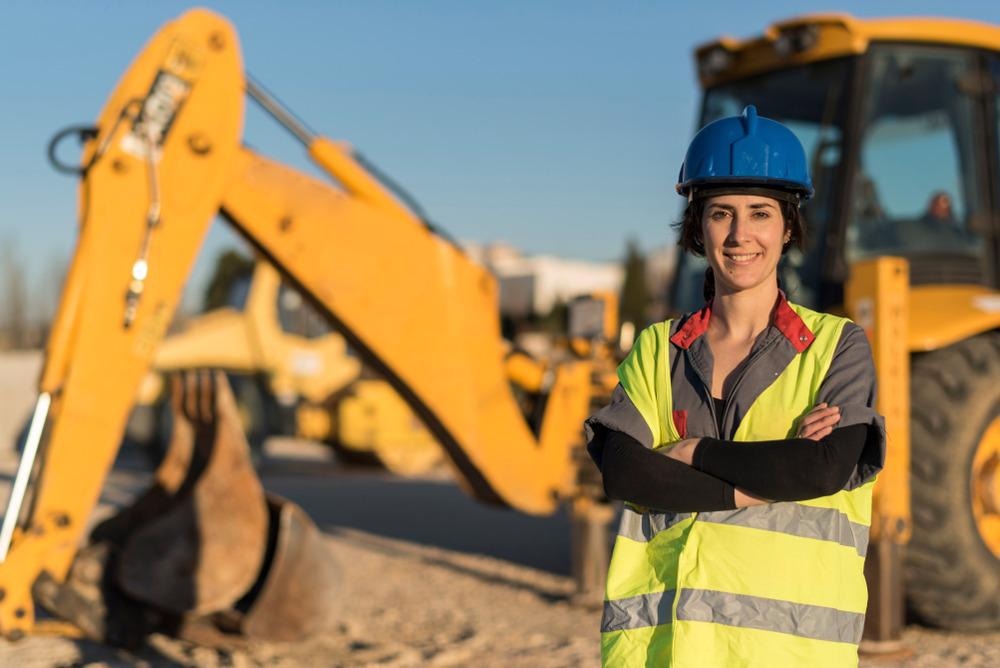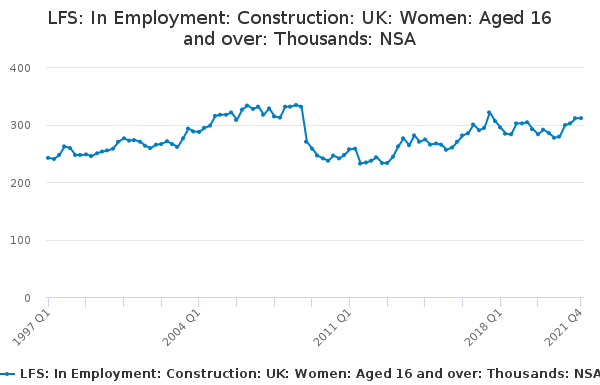In 2022, women remain significantly underrepresented in the construction industry. But the proportion of women in construction is steadily rising, with 2021 seeing the highest ratio of women in the industry (in the UK) for at least 25 years. This article outlines the facts and figures around women in construction and highlights some notable cases where the balance is beginning to tip.

Image Credit: FotoAndalucia/Shutterstock.com
Barriers for Women in Construction
A recent article in the New Civil Engineer, an online trade publication, reports on female participation in the construction industry. The article reports that 90% of women working in construction work in a desk-based role, with only 2.5% of women in the industry working in skilled trades.
The latest McKinsey report on diversity demonstrates a lack of diversity at the top of construction firms as well: only 16% of the women in construction work in executive roles and just 2% are company CEOs. This has an effect on progression routes for all women in the industry: 45% of women surveyed said that the absence of women in senior roles in construction companies had hampered their career journeys.
The absence of women in construction is possibly caused by discrimination faced by female construction workers. The New Civil Engineer article reports a 2020 study’s findings that 72% of women in construction say they have faced discrimination at work. The article also reports annual research that finds 47% of women who leave construction cite the male-dominated culture of the industry as a reason for leaving, with 38% saying that outright discrimination had forced them out.
The gender pay gap is also a problem in construction. The article presents US Bureau of Labor Statistics data showing female managers in the construction industry earning just 75% of the salaries that their male counterparts can expect. In construction and extraction occupations, women make 79% of what men in similar roles earn.
Women in Construction: The UK Picture
These statistics are comparable to UK equivalents as well. British non-profit Women Into Construction has reported an £11,000 earnings gap between men and women working similar construction jobs in the UK. Less than one per cent of the women working in the UK construction industry work in skilled trades like bricklaying, electrical work, carpentry, surveying, roofing, and plastering.
UK developer, Wrekin Housing Group, also reports findings that women are put off applying to construction jobs for three main factors: unequal growth opportunities (17% of women put off cited this as a reason,) bias in the workplace (cited by 33% of women surveyed,) and a lack of female role models in the industry (cited by 29%.) The firm is working to break down these barriers, with over 50% of its development team made up of women.
Randstad research has also found that more women are entering construction management roles in the UK in recent years. There was a 9% increase in the number of women in these positions between 2018 and 2021.
Data from the UK’s Office for National Statistics (ONS) shows that, historically, the ratio of men to women in construction has remained at a fairly steady 87:13 (male: female) in the UK since 1997. The number and ratio of women in construction were gradually growing up until 2008, but immediately after the 2008 financial crisis – which hit the construction industry around the world – the total number of women in the industry and the ratio of women to men fell sharply (only 10.7% of UK construction workers were women in 2009, compared with 13% in 2008.)

Source: ONS Statistics
However, from 2012 onwards both the number and proportion of women in construction in the UK have been growing again. 2021 saw the biggest share of women working in construction: 14.3% compared with 13.0% in 2020 and 12.5% in 2019.
Women In Construction in the US
In the US, women only make up 10.9% of the construction industry’s workforce. Only looking at trades roles in the industry, women make up less than 1% of the workforce in the US. Women represent just 7% of line executive positions in the US construction industry. Women are largely office-based (87%), with only 2.5% working in trades.
BigRentz.com reports McKinsey findings that show the opportunities available to construction companies willing to diversify their teams, especially in executive roles. Companies who had at least three out of ten executive management roles filled by women had a 48% chance of performing better than their least diverse competitors.
There is also more positive news for women in construction. According to a 2019 construction technology report by JBKnowledge, 13% of construction companies in the country are female-owned. Further, according to the National Association of Women in Construction, the number of construction companies owned by women grew by 64% between 2014 and 2019, and of the female-owned US construction companies, 9% brought in revenues greater than $500,000.
References and Further Reading
BigRentz (2022). Women in Construction: The State of the Industry in 2022. BigRentz.com. [Online] Available at: https://www.bigrentz.com/blog/women-construction
Hakiman, R. (2022). How women in construction are using TikTok to battle discrimination. New Civil Engineer. [Online] Available at: https://www.newcivilengineer.com/latest/how-women-in-construction-are-using-tiktok-to-battle-discrimination-07-03-2022/
ONS (2022). Employment and labour market. ONS.gov.uk. [Online] Available at: https://www.ons.gov.uk/employmentandlabourmarket/
Women Into Construction (2018). Changing the Face of Construction. CITB. [Online] Available at: https://www.citb.co.uk/media/yvwfclzy/social_return_on_investment_for_women_into_construction_oct2018_report.pdf.
Wrekin Housing Group (2022). Wrekin Supports Women in Construction Week 2022. Wrekin.com.
2019 Construction Technology Report. JBKnowledge. https://jbknowledge.com/
National Association of Women in Construction. (n.d.). National Association of Women in Construction. https://www.officialmediaguide.com/naw/
Disclaimer: The views expressed here are those of the author expressed in their private capacity and do not necessarily represent the views of AZoM.com Limited T/A AZoNetwork the owner and operator of this website. This disclaimer forms part of the Terms and conditions of use of this website.